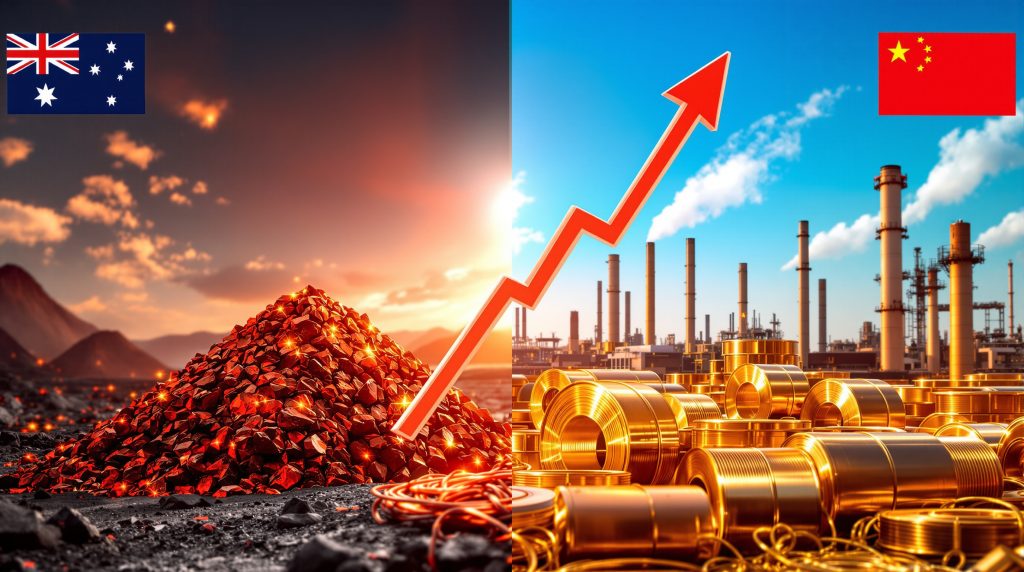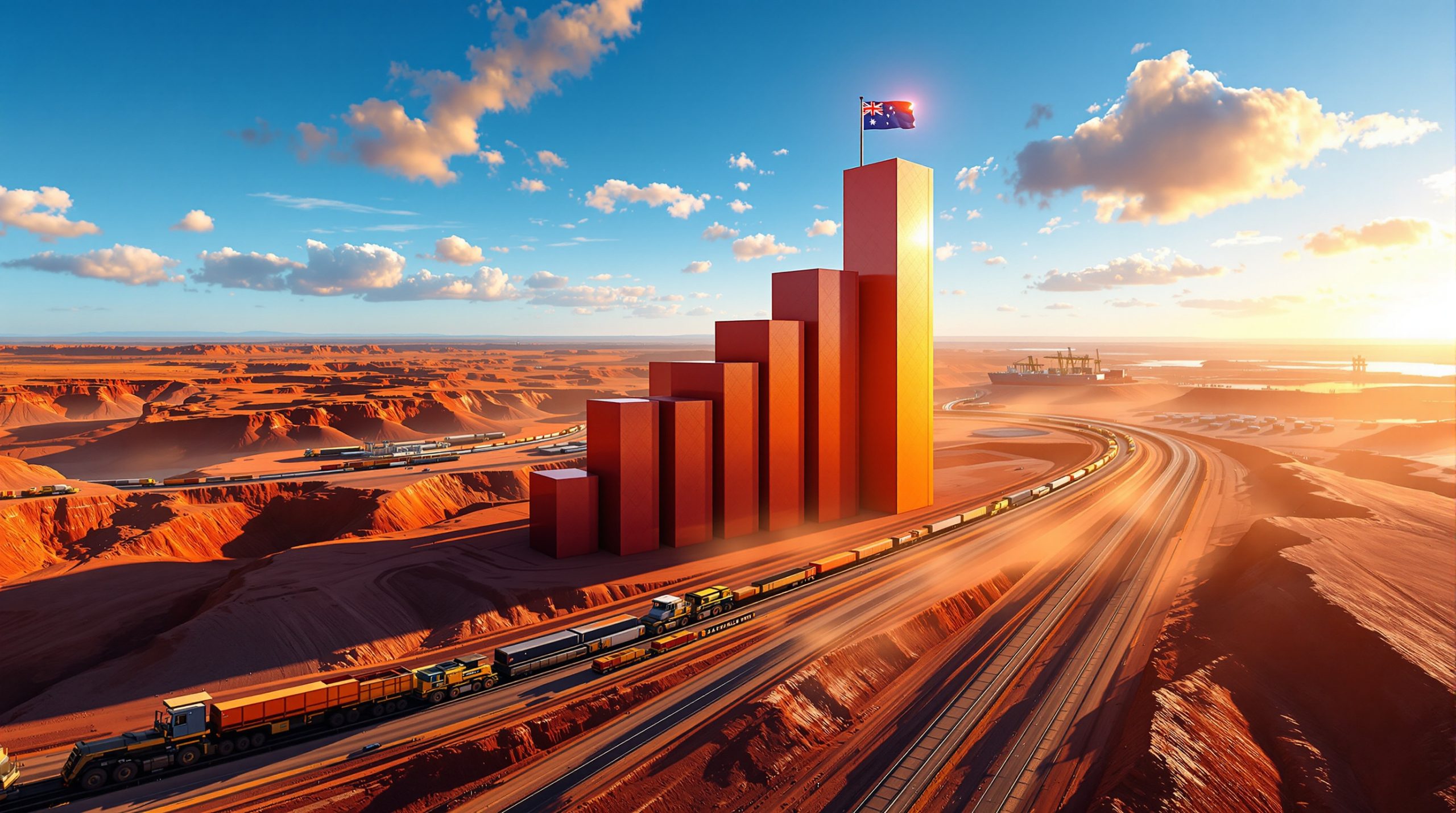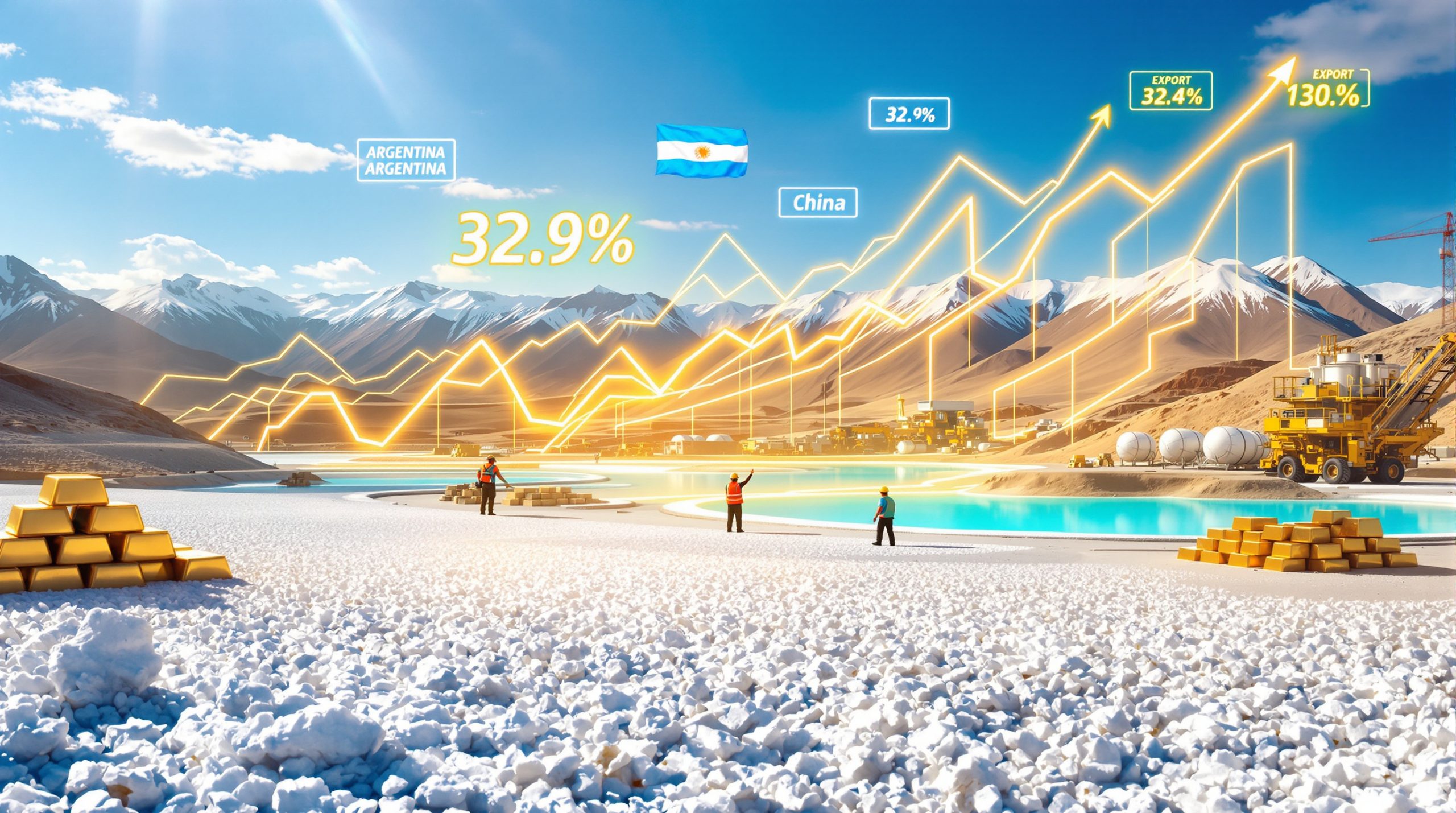The Perfect Storm: Supply Constraints and Renewed Demand
Recent weeks have witnessed remarkable price movements in key industrial metals, with iron ore and copper price surge experiencing substantial gains that have rippled through global markets. This surge has directly benefited major Australian mining companies, whose share prices have responded positively to these commodity price increases.
The iron ore price has climbed to approximately US$107.85 per tonne, while copper has made an even more dramatic move, jumping 4.8% overnight to reach US$5.13 per pound. These significant price shifts represent a convergence of multiple factors creating upward pressure in the global commodities landscape.
What's Driving the Current Price Rally?
The simultaneous upward movement in both iron ore and copper prices reflects a perfect storm of supply-side constraints and unexpected demand resilience. For iron ore, the 1.4% overnight gain continues its pattern of defying bearish analyst predictions, while copper's 4.8% single-day move represents one of the more significant short-term price swings seen in recent months.
Market analysts point to several converging factors driving this rally, including production disruptions, strategic stockpiling, and renewed optimism about global industrial activity. This combination has created a favorable environment for resource companies with strong exposure to these key industrial metals.
The China Factor: Demand Resilience Despite Economic Headwinds
Despite ongoing property sector challenges that many predicted would significantly dampen demand, China's appetite for raw materials has remained surprisingly robust. This resilience suggests industrial activity in other sectors is compensating for construction weakness, creating a more diverse demand base than previously understood.
How Is Chinese Demand Influencing Commodity Markets?
China remains the world's largest iron ore importer, with monthly imports frequently exceeding 100 million tonnes. This sustained purchasing power gives Chinese buyers significant influence over global pricing, especially when iron ore price trends emerge unexpectedly.
The continued strength in Chinese industrial sectors outside real estate has provided crucial support for commodity prices, demonstrating the complexity of China's economic transition. Manufacturing, infrastructure, and technology sectors continue driving material demand even as property investment struggles.
What Role Are Trade Relations Playing?
Recent diplomatic developments between the United States and China have raised market hopes for a potential trade agreement that could avert the implementation of 100% tariffs threatened by US President Donald Trump. This potential easing of geopolitical tensions has provided additional support for commodity prices.
Improved trade relations would likely boost Chinese industrial output, as manufacturers gain greater access to international markets and face fewer tariffs impact investment markets. The resulting increase in production would naturally drive higher demand for raw materials, creating a positive feedback loop for commodity prices.
Supply-Side Constraints: A Critical Factor in Price Support
While demand resilience has been important, supply limitations have played an equally significant role in driving prices higher. Production disruptions across major mining regions have created a fundamental supply-demand imbalance that markets are now pricing in.
Why Is Copper Supply Particularly Tight?
The copper market has been especially impacted by a series of production challenges across major mining regions. Industry reports indicate several significant disruptions affecting global copper output in recent months, creating a supply squeeze just as demand signals have strengthened.
Weather events, technical challenges, and operational issues have combined to reduce available supply at a critical time. The resulting tightness in physical copper markets has translated directly into higher prices as consumers compete for limited available material.
Are Iron Ore Supplies Similarly Constrained?
While iron ore hasn't faced the same level of supply disruptions as copper, strategic stockpiling by Chinese steel mills in anticipation of peak demand seasons has contributed to price support. This behavior reflects expectations of continued strong demand, despite substantial port stockpiles in China.
Industry analysts note that Chinese steel producers have been actively building inventory positions ahead of anticipated production increases. This forward-looking purchasing strategy has helped support iron ore prices even during periods when fundamental demand indicators might suggest weakness.
ASX Mining Giants: Beneficiaries of the Commodity Surge
The recent commodity price movements have directly benefited Australia's largest mining companies, whose share prices have responded strongly to improving market conditions. These companies' significant exposure to iron ore and copper has positioned them perfectly to capitalize on the current rally.
How Are Major Mining Stocks Responding?
The share price performance of Australia's mining giants reflects the positive impact of rising commodity prices:
| Company | Recent Share Price Movement | YTD Performance (2025) |
|---|---|---|
| Rio Tinto (ASX: RIO) | +3.5% | +9.6% |
| Fortescue (ASX: FMG) | +2.4% | +3.7% |
| BHP Group (ASX: BHP) | +2.2% | +7.2% |
These performances significantly outpace the broader S&P/ASX 200 Index, which was down 0.3% during the same period. Importantly, these year-to-date figures do not include the dividends these companies have already paid in 2025, meaning total shareholder returns have been even stronger.
What's Behind Rio Tinto's Outperformance?
Rio Tinto shares have shown particular strength following the release of its third-quarter production update. The company reported several positive developments that have resonated with investors:
- 6% quarter-on-quarter increase in Pilbara iron ore shipments to 84.3 million tonnes
- 9% year-on-year increase in copper production, despite an 11% drop from the previous quarter
- Record quarterly production in its bauxite operations
- Continued progress in the underground expansion at Oyu Tolgoi, which is expected to boost copper output by more than 50% this year
CEO Simon Trott noted the company is strengthening performance across its asset portfolio, with particular success in its bauxite business and at the strategically important Oyu Tolgoi operation, where the underground ramp-up remains on schedule to deliver significant copper production growth.
Strategic Diversification: The Copper-Iron Ore Balance
Major miners have been strategically rebalancing their portfolios to optimize exposure to both traditional and future-focused commodities. This strategic positioning reflects evolving views about long-term demand patterns and value creation opportunities.
How Are Miners Adjusting Their Commodity Exposure?
Both BHP and Rio Tinto have been actively working to expand their copper exposure in recent years. While iron ore remains their primary revenue driver, copper now represents their second-largest and growing revenue stream.
This strategic diversification reflects long-term industry expectations about future demand patterns:
- Iron ore demand remains tied to traditional infrastructure and construction
- Copper demand is increasingly driven by green energy transition, electric vehicles, and digital infrastructure
The ability to generate revenue from both commodities provides these companies with greater resilience against market fluctuations and positions them to benefit from multiple economic growth vectors.
Why Is Copper Particularly Strategic?
Copper's role in the global energy transition makes it especially valuable from a long-term strategic perspective. Industry analysts highlight several factors driving copper's growing importance:
- Essential component in electric vehicles, which require significantly more copper than conventional vehicles
- Critical element in renewable energy systems including solar panels and wind turbines
- Fundamental to expanding power grid infrastructure needed for electrification
- Increasingly important for data centers and AI infrastructure as digital transformation accelerates
These structural demand drivers are expected to create sustained demand growth for copper over the coming decades, potentially outpacing supply growth and supporting favorable pricing dynamics.
Future Outlook: Sustainability of the Price Rally
While current price momentum is clearly positive, investors are naturally questioning whether these levels can be maintained. Market observers point to a complex mix of factors that will determine the sustainability of the current rally.
Can These Price Levels Be Maintained?
Market analysts remain divided on the sustainability of current price levels, with compelling arguments on both sides:
Bullish factors:
- Ongoing supply constraints, particularly in copper
- Potential additional Chinese stimulus measures to support economic growth
- Continued infrastructure spending globally, including in developed markets
- Energy transition driving increased metal intensity in various applications
Bearish considerations:
- Persistent concerns about Chinese property sector weakness affecting overall demand
- Potential global economic slowdown if monetary tightening impacts industrial activity
- New mining capacity eventually coming online to address supply shortages
- Strategic metal reserve releases by major governments to moderate prices
The interaction of these competing forces will determine whether current price levels represent a new sustainable range or a temporary spike before normalization.
What Are The Key Indicators To Watch?
Investors monitoring these commodity markets should focus on several critical indicators:
- Chinese manufacturing PMI data to gauge industrial activity strength
- Infrastructure spending announcements from major economies
- Production reports from major mines for signs of supply recovery
- US-China trade war impact on global markets
- Inventory levels at major ports and exchanges
These data points will provide early signals about shifts in supply-demand dynamics that could affect price trajectories.
Investment Implications: Beyond The Major Miners
While the major diversified miners capture headlines, the current commodity price environment creates opportunities across the broader mining ecosystem. Investors have multiple options for gaining exposure to these trends.
Which Other ASX Companies Might Benefit?
Beyond the major miners, several categories of ASX-listed companies have significant exposure to iron ore or copper:
- Mid-tier producers with quality assets but lower market profiles
- Mining services companies supporting major operations with equipment, logistics, and technical services
- Junior explorers with promising copper discoveries that could attract development capital
- Port and rail infrastructure operators handling bulk commodities
Each of these segments offers different risk-reward profiles and potential catalysts, allowing investors to tailor their exposure to their investment objectives.
What Risk Factors Should Investors Consider?
Despite the current positive momentum, several risk factors warrant careful consideration:
- Commodity prices remain inherently volatile and can reverse quickly on changing sentiment
- Production disruptions can impact individual company performance regardless of broader market trends
- Currency fluctuations affect realized prices in Australian dollars, adding another layer of variability
- Regulatory changes in key markets could alter demand patterns or impose additional costs
- Long-term technological shifts may change metal intensity requirements in unexpected ways
Successful investing in the resources sector requires managing these risks through diversification, careful company selection, and appropriate position sizing.
Conclusion: Strategic Positioning in a Dynamic Market
The current iron ore and copper price surge represents a significant opportunity for investors in the resources sector, but requires careful consideration of both cyclical and structural factors. While short-term price movements capture attention, the long-term strategic positioning of mining companies toward future-focused commodities may ultimately prove more important for sustained performance.
As the global economy continues its complex transition toward more sustainable energy systems while maintaining traditional infrastructure development, metals like copper and iron ore will remain fundamental building blocks, though their relative importance and price dynamics may evolve considerably.
Investors seeking to capitalize on these trends should consider not only current price momentum but also companies' ability to navigate the changing landscape through operational excellence, portfolio optimization, and disciplined capital allocation. Furthermore, understanding mineral exploration insights and following copper price prediction from industry experts can provide valuable guidance. Those that successfully balance these factors will be best positioned to deliver long-term shareholder value regardless of short-term price fluctuations.
Want to Capitalise on the Next Major Mineral Discovery?
Stay ahead of the market with Discovery Alert's proprietary Discovery IQ model that instantly notifies you of significant ASX mineral discoveries, turning complex data into actionable investment insights for both copper and iron ore opportunities. Explore why historic discoveries can generate substantial returns by visiting Discovery Alert's dedicated discoveries page and begin your 30-day free trial today.




